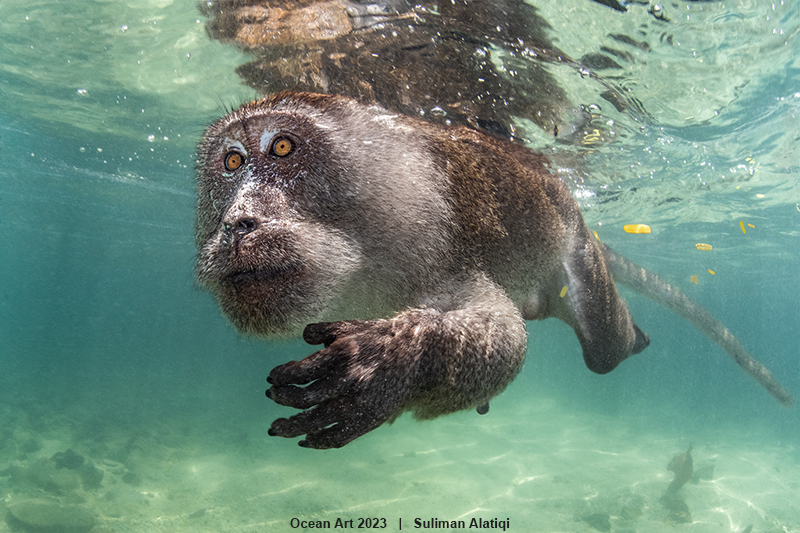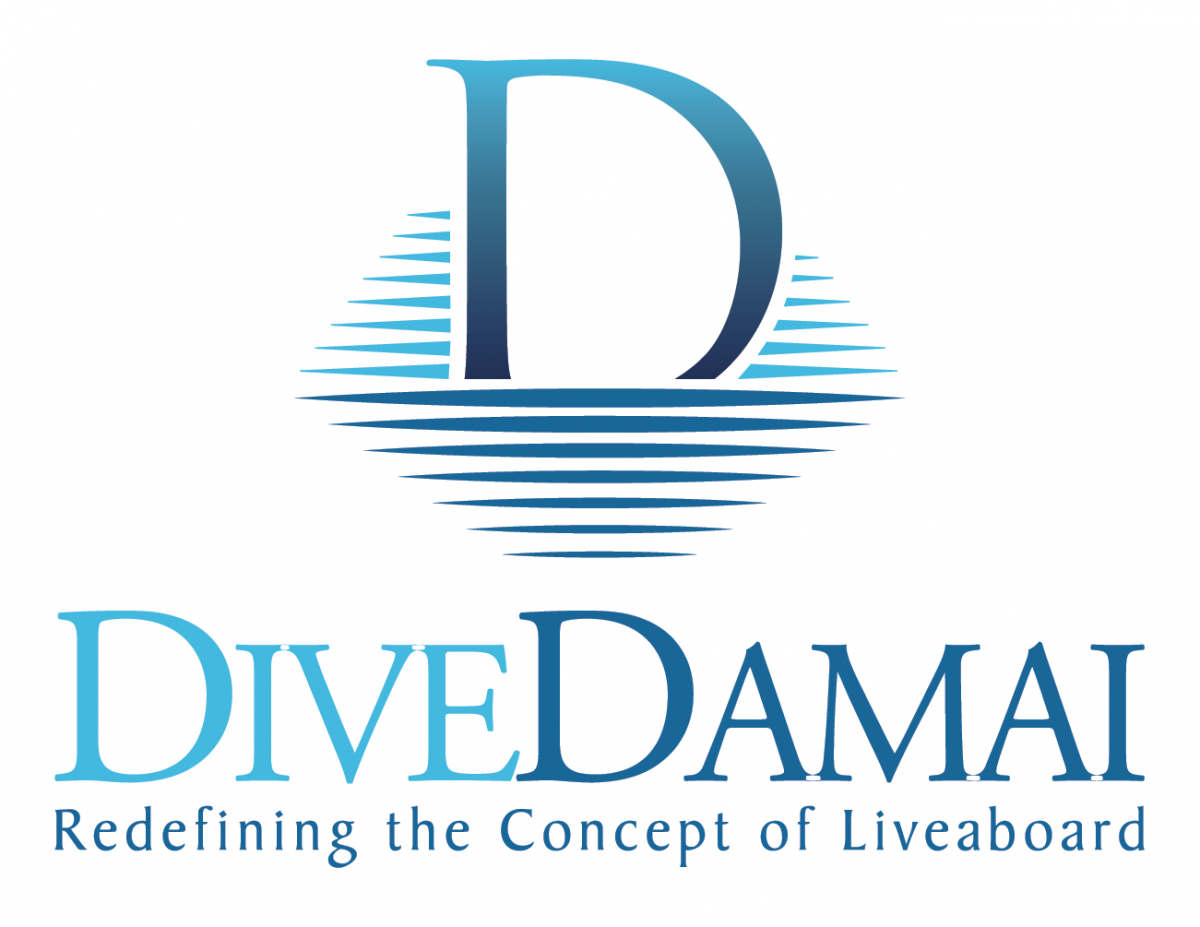Ocean Art 2023 - 1st Place Portrait
1st Place Portrait
Suliman Alatiqi
"Aquatic Primate"
The Story:
During fieldwork at Phi Phi Islands, Thailand, spanning several weeks, I focused my efforts on documenting the maritime behavior of the Crab-eating macaque with particular focus on their water forages. The macaques have adapted very well to living around the sea and will venture into the water for various reasons including transportation, scavenging, cooling down and playing. Highly efficient swimmers, they can dive for up to half a minute and can cover short distances faster than most humans. This photo offers a rare glimpse of the swimming movement of a male macaque.
Location:
Phi Phi Islands, Thailand
Equipment Used:
- Camera: Nikon D850
- Housing: Nauticam NA-D850 Housing
- Lens: Nikon 8-15mm AF-S FISHEYE f/3.5-4.5E ED
- Lights/Strobes: Sea & Sea YS-D2J
Camera Settings:
- Aperture: F18
- Shutter Speed: 1/250 sec
- ISO: 640
Interview with Suliman Alatiqi:
Can you share the story behind the winning photograph of the Macaque in Thailand? What inspired you to capture that particular moment?
Having read about the fact that Crab-eating Macaques forage in the water, I became very curious about this behavior and the possibility of documenting and showcasing it from an underwater perspective. I therefore decided to initially spend a week at Phi Phi Islands where they are reliably seen to explore this part of the Macaque’s life. Without any guide or expert on this issue, and with very little information published on this behavior, I committed long hours of fieldwork by myself tracking and observing different clans of macaques to try and understand when, where and why they might engage in this activity. Having learned a lot in my first week, I decided to extend my stay to try and capture a compelling series of photos on the subject. The more I learned, the more my chances improved.
Were there any challenges or interesting experiences you faced while conducting research on these animals in Phi Phi, and how did they influence your photography?
The biggest challenge, as it often is, was being at the right place at the right time. The water forages are very quick and sparse. But the most interesting experience was being able to bond with one clan in particular over several days. I think having seen me around a few times the chief became very relaxed around me and they went about their business not minding my presence (see below photo).

On the last day I set aside my camera and sat shoulder to shoulder with the chief on the water’s edge and just enjoyed the moment as though a guest in their house. It felt like hanging out with a buddy on the poolside (see below). It was an unforgettable experience, I felt accepted.

What equipment and techniques did you use to capture this underwater image, considering the dynamic nature of both the subject and the environment?
For this photo I used a fisheye lens on my Nikon D850 in a Nauticam housing. As one can tell by the image, the water visibility was not great (with approximately 5 meters of visibility). I therefore aimed for a close-focus wide angle shot to minimize the water column between the lens and the subject while displaying enough of the natural environment for context. I also opted for strobes to get the most color and detail by eliminating shadows on the face despite the drag it had on me in getting into the right position. I think the overall effect of this approach is an imposing image.
How will winning the Ocean Art contest impact your career as an underwater photographer, and what opportunities do you foresee in the future?
To answer that question, I must first say that Ocean Art has been a leading reference point for all underwater photographers since its inception and has been a great source of inspiration to me. Its galleries of previous winners represent a standard of what makes a winning image and I often refer to it for benchmarking. Therefore, being among the winners is a tremendous honor and naturally has a significant impact on me. Winning the contest also gives me a fair and unbiased evaluation of my merits int this field and is the biggest sign that I am on the right track. In the future I foresee more extended fieldwork covering specific marine animals to try and capture unique behaviors and stories. I can only hope to be featured among the winners in subsequent years (I will certainly try!)
What advice would you give to aspiring underwater photographers who aim to capture impactful and meaningful images in the marine environment?
The most important advice I have for aspiring photographers is patience. Especially at a time when people have come to expect fast results in all realms of life, photography—and especially wildlife photography—is an area where patience is the key to success. Patience in learning, receiving technical advice and criticism, honing dive and photo skills, and of course patience with the subject matter itself which does not owe you anything. My other advice is that it is very common (and in some cases most likely) that attempting to capture a photo you hope for does not work out. I have spent long hours on other projects that did not necessarily pan out the way I hoped for it. Don’t be discouraged by this. Instead focus on enjoying the process while keeping expectations low which will make you keep trying and patient about learning from your mistakes.






























